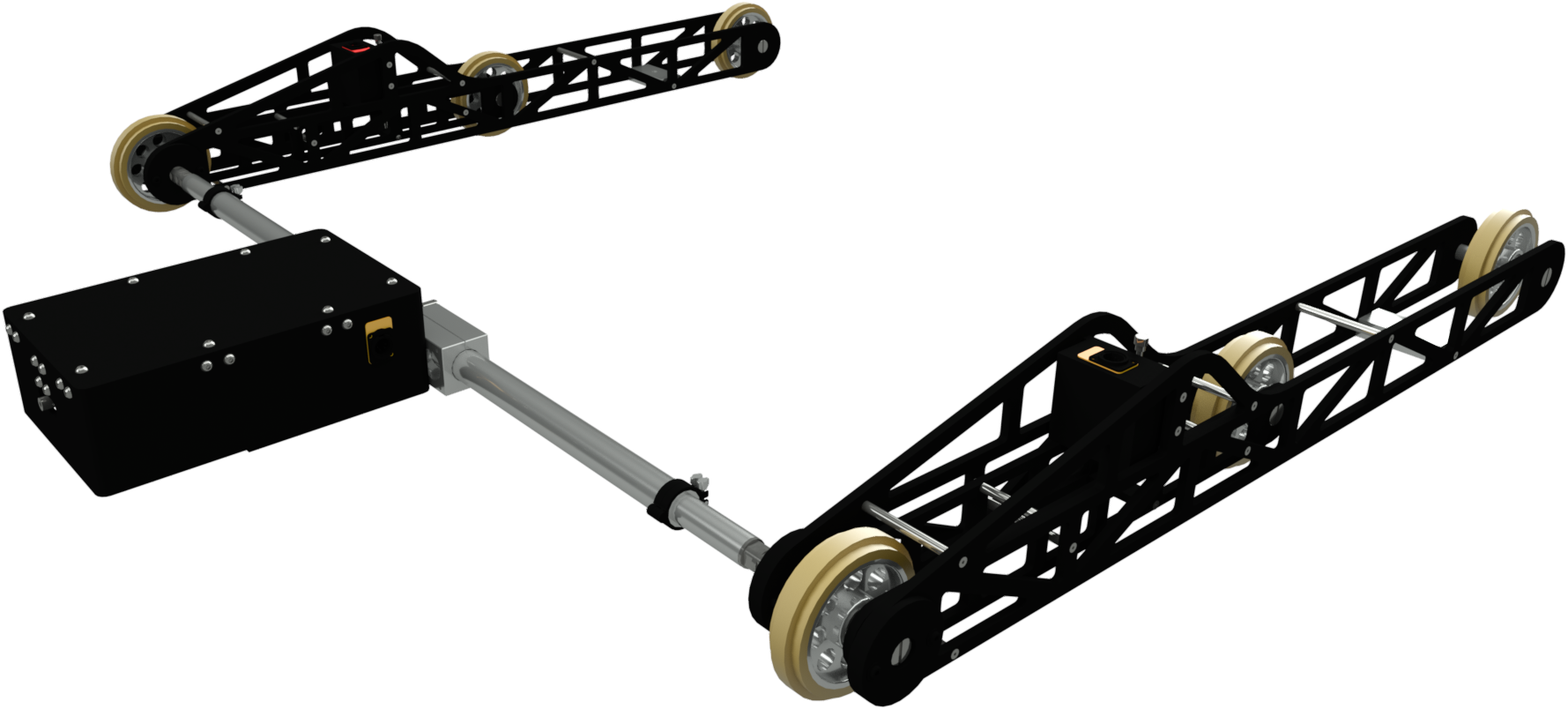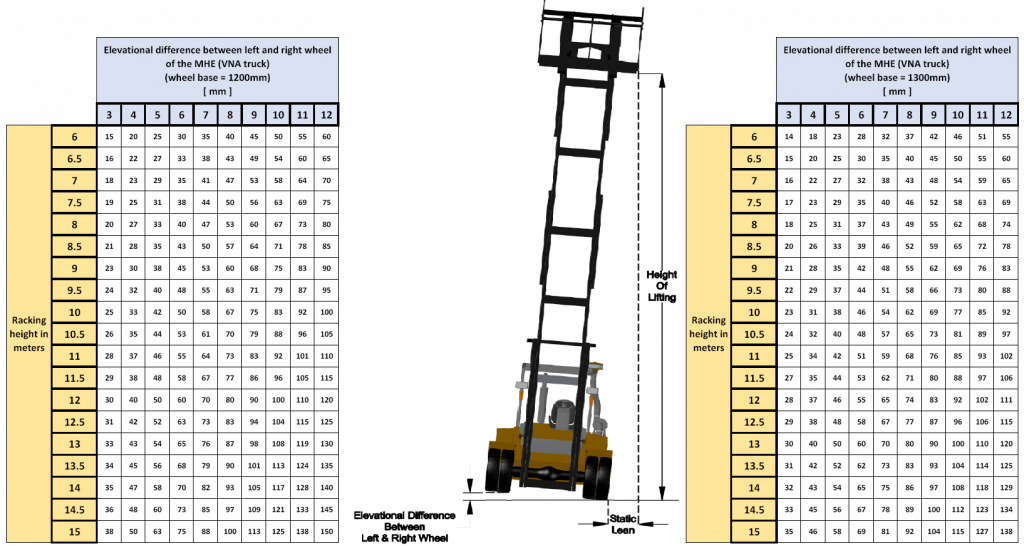DIN 15185 Defined Movement Floor Classification
In defined movement (DM) areas, Material Handling Equipment (MHE) travel along fixed paths.
Defined movement areas are usually associated with high-level storage racking with very narrow aisles (VNA) in warehouses.
The German standard DIN 15815 for use in very narrow aisles (VNA) provides information about required surface regularity in defined movement areas.
The DIN 15185 standard takes into consideration elevational difference bewteen front left and right wheel of the Material Handling Equipment (MHE) and longitudinal wave measured over 1m, 2m and 4m using simulated straight edge.
Features Measured
TRANSVERSE – Transverse permissible elevational difference in mm between the centres of the front load wheels of the MHE.
LONGITUDINAL – Longitudinal permissible gap under a simulated straight edge using two 1m long skates (one for each front wheel).
All above Properties are measured using Dabros Digital Floor Profiler, which can produce produces continuous or semi-continuous readings every 50mm with accuracy of 0.1mm. The interval between the readings can easily be adjusted to client’s requirements (for example, readings can be taken as often as every 2mm), however measurements taken every 50mm are sufficient enough to provide true profile of the path of the MHE.

Table 1: Permissible elevational differences (Transverse Limits)
| Permitted elevational differences between the centres of the left and right outer wheel tracks of the MHE | |||
up to 1.0m | 1.0m up to 1.5m | 1.5m up to 2.0m | 2.0m up to 2.5m | |
Truck lifting height ≤6000mm | 2.0mm | 2.5mm | 3.0mm | 3.5mm |
Truck lifting height > 6000mm | 1.5mm | 2.0mm | 2.5mm | 3.0mm |
Table 2: Evenness tolerances on the line of the tracks (Longitudinal Limits)
Length of simulated straight edge | 1.0m | 2.0m | 3.0m | 4.0m |
Maximum permissible clearance under simulated straight edge | 2.0mm | 3.0mm | 4.0mm | 5.0mm |
Above limits apply to all types of floor application | ||||
Limits Explained
Each of the properties (Transverse and Longitudinal) have 100% limit.
In order for the floor to comply with any required classification following criteria have to be met:
1. None of all the Transverse measurements in each individual aisle surveyed exceeds the 100% limit of the required classification.
2. None of all the Longitudinal measurements under 1m, 2m and 4m simulated straight edge in each individual aisle surveyed exceeds the 100% limit of the required classification;
Example:
Classification required = DIN 15185
Transverse = 1300mm
Truck Lift Height exceeds 6000mm
a) 100% of all Transverse measurements recorded must have values of max. 2.0mm or less in order to comply with that classification.
b) 100% of all Longitudinal values under 1m simulated straight edge measurements recorded must have values of max. 2.0mm or less in order to comply with that classification.
c) 100% of all Longitudinal values under 2m simulated straight edge measurements recorded must have values of max. 3.0mm or less in order to comply with that classification..
d) 100% of all Longitudinal values under 4m simulated straight edge measurements recorded must have values of max. 5.0mm or less in order to comply with that classification..
Static Lean
Below is an example of how truck lean increases with lifting height.
This is based on the truck with rigid mast, however due to the engineering tolerances in the mast and the dynamic forces when the VNA truck is in motion, values in the table could increase by up to 3 times.



